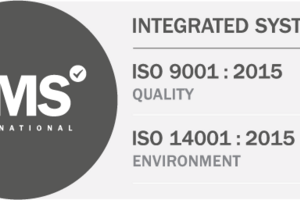13 April 2018
How to take advantage of MEES: A check-list
Bob Hall, Greenlite’s Managing Director urges commercial landlords to take advantage of MEES to improve the value of their property assets and secure long-term occupancy.
A guide to MEES
The Government’s Minimum Energy Efficiency Standards (MEES) on domestic and commercial private rental properties came into force on 1st April 2018.
They are designed to tackle the very least energy efficient properties in England and Wales, those rated F or G on their Energy Performance Certificate (EPC). These properties waste energy and are an unnecessary cost on business and the wider economy.
The MEES Regulations set out the minimum level of energy efficiency for the commercial private rented sector. This is currently set at an energy performance certificate (EPC) rating of at least band E and means that, subject to certain requirements and exemptions, from 1st April 2018 landlords may not grant a tenancy to new or existing tenants if their property has an EPC rating of band F or G (shown on a valid EPC).
It also means that from 1st April 2023, landlords must not continue letting a property which is already let, if that property has an EPC rating of band F or G.
Act now, or face future penalties
Rather than looking for excuses for non-compliance, landlords should act now so they can reap the returns sooner.
Since it won’t be possible to rent non-compliant properties from 1st April 2018, it is obvious that the property could quickly become a liability rather than an income-producing asset. This potential for short-term cash-flow problems and devaluing of assets is not something any landlord wants on the balance sheet.
While there might be costs to ensuring compliance, the potential penalties for non-compliance are considerable, including fines of up to £150,000.
It’s a win-win
Savvy tenants are demanding more from landlords, such as security of tenure, confidence the space is fit for purpose and that they will be able to carry out their business without disruption.
This includes the building’s energy efficiency: if it isn’t compliant, it will impact on their energy costs and the cost of doing business. Plus, if it isn’t energy efficient, it could impact on staff well-being and productivity, affecting their profitability. Landlords should do the work to ensure compliance before letting to a new tenant.
But, if a landlord decides that energy efficiency measures need to be undertaken during the tenancy, the disruption will impact the tenant’s business operations, with possible additional temporary relocation costs, staff retention issues etc. And, on completion of the project, potential increased rent or service charges. This could mean they don’t take the property, avoiding problems for their business but leaving the property unoccupied.
The implications of not being MEES compliant should be uppermost in landlords’ thoughts, for example, can I let the property, will I be liable for compensation to the tenant’s business during the disruption of retrofitting etc.
Commercial landlords should be aware of the benefits of bringing their properties up to compliance; both in the short- and long-term. After all, it’s more cost-effective in the long-term to retain satisfied tenants, building a more profitable relationship and ensuring the asset performs for years to come.
Speak to the Greenlite team for advice on compliance and energy efficiency, call: 0844 880 2116.


